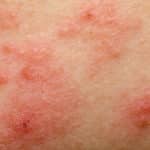Treatments for Blister Problems
Getting a blister on your foot after a 5K or an evening spent in high heels is not likely cause for alarm, but there are other kinds of blisters that should be seen and treated by your board-certified dermatologist. Sometimes, the appearances of blisters can be a sign of a more serious medical condition that your doctor will be able to diagnose for you and begin your path of treatment.
A fluid-filled blister can be an annoyance when it is located right where your slingbacks strap needs to be, and can prevent you from wearing those fabulous heels you had in mind for a wedding or special event, or a blister can form anywhere else on your body – which can be very upsetting when you don’t yet have a doctor’s opinion on what that blister is.
Blisters can be caused by rubbing, allergic reactions or infections such as the following:
- Sunburns
- Burns
- Friction, such as from a shoe
- Eczema
- Impetigo, which is a contagious infection of the skin
- Viral infections such as chicken pox or herpes zoster
- And more…
Since the symptoms of blisters can appear much like the symptoms of other skin conditions, always consult your dermatologist for an accurate diagnosis, and please do follow medical advice not to pop any blisters, thinking you’re helping it to heal faster. Popping a blister can lead to further injury or infection.
Your doctor will be able to suggest proper self-care and perhaps medication to help heal whatever is causing your blister or blisters. Some of the top self-care remedies for blisters include:
- Washing the area gently with soap and water.
- Applying a cold pack to reduce any swelling or discomfort in the affected area
- Keep the blister area dry
- If the blister bursts, cover it with a dressing or adhesive bandage to keep the area clean as it heals.
- Keep an eye on the area, watching out for signs of infection, such as redness, swelling, warm, pus formation or pain. If you notice any signs of infection, or if it just doesn’t seem to be healing right, visit your doctor for further care. You may need antibiotics to fight off a beginning infection.
- Observe the area for signs of infection such as increased warmth, swelling, redness, drainage,





